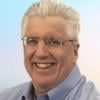
Credit: Bill Carey
The location of a drone operator should be made available to police but not to the public, the National Business Aviation Association (NBAA) says in a Jan. 19 critique of the FAA’s new Remote Identification of Unmanned Aircraft final rule. “[W]hile NBAA broadly supported many of the provisions...
Subscription Required
NBAA Raises Privacy Issue Over New Drone Regulation is published in Aerospace Daily & Defense Report, an Aviation Week Intelligence Network (AWIN) Market Briefing and is included with your AWIN membership.
Already a member of AWIN or subscribe to Aerospace Daily & Defense Report through your company? Login with your existing email and password.
Not a member? Learn how you can access the market intelligence and data you need to stay abreast of what's happening in the aerospace and defense community.





